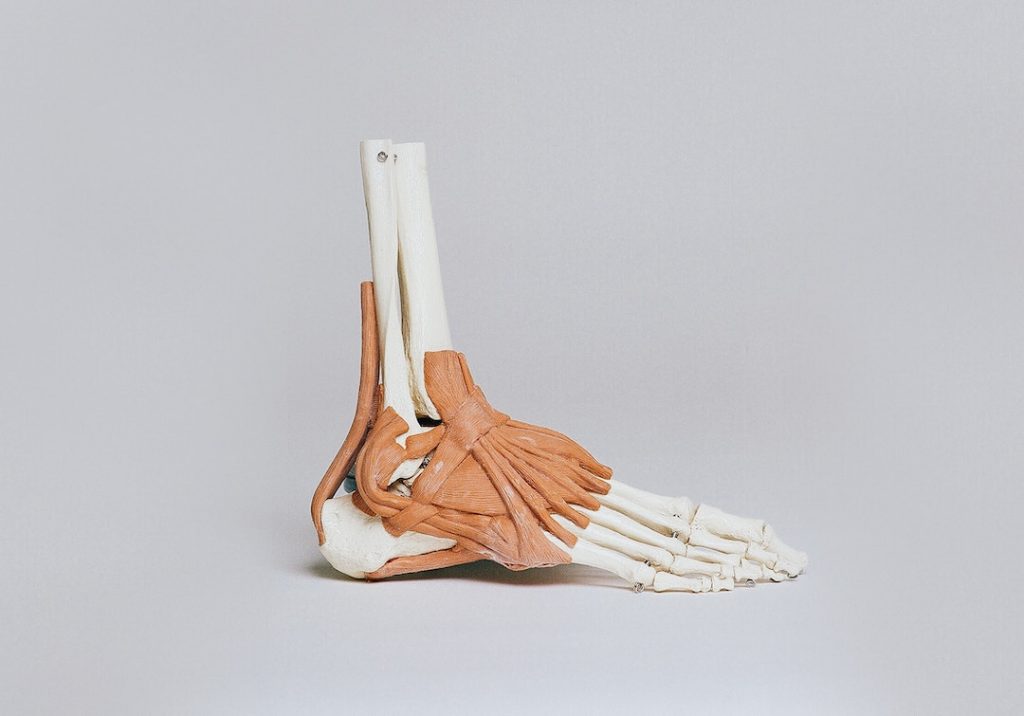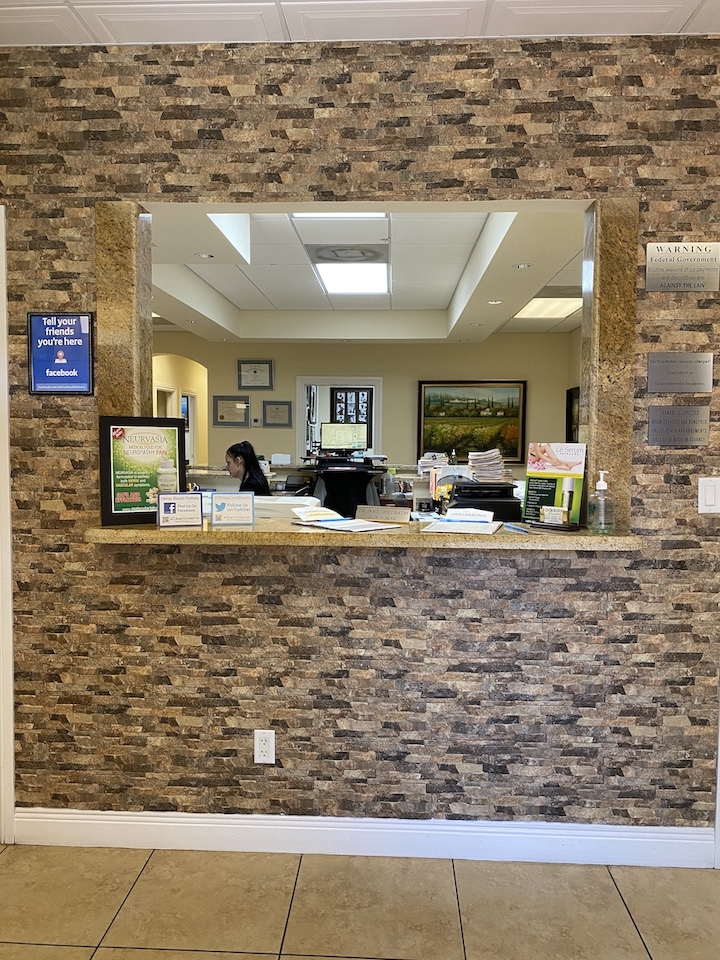When faced with foot or ankle pain from conditions such as plantar fasciitis, bunions, metatarsalgia, gout, hammer toe or injuries like ankle sprains and broken toes, patients need to decide on which medical specialist to see, a podiatrist or an orthopedist. The most important thing is relief, so making an informed decision on when to see a podiatrist vs an orthopedist is imperative. With two doctors you may very well receive two solutions, and one is likely to be the better option.

To answer the common debate, “which is better for foot or ankle problems, a podiatrist or orthopedist?”, we are going to look at both branches of medical sciences in-depth so you can understand the differences, then we will go over a steadfast way of choosing between an orthopedic surgeon and a podiatrist AND ultimately the most crucial tips for deciding on the right medical professional to cure your foot or ankle problem.
Podiatrist vs Orthopedist
Both podiatrists and orthopedists are qualified health specialists who have completed an intensive and austere medical education program followed by a period of residency. This includes strict licensure and a board certification process. Podiatrists and orthopedists are both medical and surgical specialists, and they are served by effectively all medical insurance companies and government bodies as such.
While the two professions have many commonalities, the main difference between the two lies in the body systems they treat.
Podiatry is a medical specialty completely devoted to the lower extremities. They treat all manner of foot and ankle related issues. Orthopedics (or Orthopaedics) is a medical specialty devoted to the entire musculoskeletal system.
As both podiatrists and orthopedists are doctors and surgeons, there is an overlap between the two specialties when concerned with bones, muscles, ligaments and joints of the foot and ankle. Because of this, people often have trouble deciding who they should see for foot and ankle problems, a podiatrist or an orthopedist. And while both podiatrists and orthopedists are highly qualified to treat foot and ankle problems, there is a surefire answer to when to see a podiatrist and when to see an orthopedist…
Let’s dig into both medical professions a little more so we can make a more certain conclusion for “podiatrist vs orthopedist” for your specific foot and ankle problem.

Read below for an overview of each specialty...
What is Podiatrist?
A podiatrist is a Doctor of Podiatric Medicine (DPM). Podiatrists are specialists in diagnosing, treating and preventing foot and ankle conditions, diseases, disorders and injuries. They are entirely devoted to all areas of medicine that concern the lower extremities, which includes treatment of the musculoskeletal system as it relates to the foot and ankle.
Some of the most common conditions and injuries podiatrists treat:
- Ankle sprains and fractures
- Broken foot or toes
- Plantar fasciitis, bone spurs, and neuromas
- Metatarsalgia
- Deformities of the feet (bunions, hammertoe)
- Hallux rigidus
- Gout
- Flat feet
- Infections of the lower extremity
- Diabetes as it relates to the foot (Neuropathy Pain)
- Arthritis and other joint diseases that affect the foot and ankle
- Abnormal mechanics of the lower extremity
- Circulation problems (varicose veins, spider veins, swelling of legs)
- Dermatological problems (ingrown nails, calluses, skin tags, skin lesions)
As podiatrists are surgeons, they specialize in a wide range of surgeries to the foot, ankle and lower leg. A few examples are surgeries for ankle fractures, soft tissue injuries (i.e. Achilles tendon ruptures), and reconstructive procedures.
Note: Surgeries are typically a “last resort” option. With new technology, there are more and more ways to treat conditions without surgery. Podiatrists like Dr. Ian Goldbaum take pride in being up to the minute with all the newest advancements. Overall, the least invasive treatment with the best result is the goal.
Podiatrists also prescribe medications and physical therapy. What’s more, they evaluate and treat skin conditions, vascular disorders, neurological disorders, and diseases that have symptoms that occur in the foot and ankle (i.e. diabetes).
All in all, podiatrists are a vital part of the health care system, treating everything from minor to severe foot and ankle issues.
Podiatrist Schooling
- 4 years of undergraduate school
- 4 years at an accredited podiatric medical school
- 3 to 4 years of residency training, which is emphasized entirely on foot and ankle treatment and surgery
From the start of pediatric medical school and residency, a podiatrist’s sole focus is on the foot and ankle.
Some podiatrists go on to complete a one or two year fellowship after their residency.
Podiatrist vs Chiropodist
Because a lot of people ask us “what is the difference between podiatrists and chiropodists?”, we thought we’d quickly answer this here. The only difference between the two is the name. Pre-1993, podiatry was called chiropody. Since then, “podiatry” and “podiatrist” have become the customary name for this practice. Thus, “Podiatrist” is the up-to-date and prevailing term for the foot and ankle medical specialty.

What is an Orthopedist?
An Orthopedist (also referred to as an orthopedic surgeon) is a medical doctor (MD). Orthopedists are devoted to diagnosing, treating, rehabilitating and preventing diseases and injuries of your body’s musculoskeletal system.
The musculoskeletal system composes muscles, tendons, bones, joints, ligaments and nerves.
As with podiatrists, orthopedic surgeons also perform surgery and they can prescribe medicine and physical therapy.
What’s more, many orthopedic surgeons specialize in a specific area of the body. This way they have a more comprehensive understanding of treatment for patients. Orthopedists can specialize in the knee, hip, spine or lower extremity.
So, since the topic of today’s discussion relates to the foot and ankle, here are some of the most common conditions and injuries treated by orthopedists who specialize in the lower extremity:
- Achilles tendinitis
- Fractures and sprains
- Ligament tears
- Osteoarthritis
- Plantar fasciitis
- Metatarsalgia foot pain
- Lisfranc injury
- Plantar fibroma and fibromatosis
For some patients, foot and ankle problems stem from other joint issues in their body, such as the knee, hip, lower back or spine. If this is the case, an orthopedic surgeon may treat a complex lower extremity problem in combination with other parts of the body. With that understanding, orthopedists who specialize in certain areas of the body must also have an erudite grasp on the entire musculoskeletal system. This means the majority of their schooling is still devoted to the musculoskeletal system as a whole. So, a new orthopedist likely has limited experience in their specific orthopedic area of expertise.
Orthopedist Schooling
- 4 years of undergraduate school
- 4 years at an accredited medical school
- 5 years of generalized orthopedic surgical residency training
Orthopedist that want to specialize in a specific area of the body will go on to do an additional year-long fellowship dedicated to the treatment of that subspecialty (i.e. the foot and ankle).

When to see a podiatrist vs orthopedist?
The more complete version of this question and the only one that truly makes sense is “when to see a podiatrists vs an orthopedist who specializes in the lower extremity”, as a general orthopedic surgeon would never be recommended over a podiatrist for anything that relates to the foot and ankle.
So, considering a “podiatrist” vs “foot and ankle orthopedic surgeon”, let’s break this down in the simplest manner.
If your foot or ankle problem is not related to the musculoskeletal system, then a podiatrist is the obvious specialist you should see. This includes circulation problems (i.e. varicose veins, spider veins, swelling of legs) and dermatological problems (ingrown nails, calluses, skin tags, skin lesions), among other foot and ankle related conditions.
If you are looking at a musculoskeletal problem, then either an orthopedist who is a foot and ankle specialist or a podiatrists can help you with treatment. Both podiatrists and foot and ankle orthopedists are highly qualified to treat and manage foot and ankle musculoskeletal conditions, non-surgically and surgically. What it really comes down to is the physician’s schooling, experience, reputation, and even how you connect with them. Moreover, some podiatrists and foot and ankle orthopedists have a specialty within their specialty. More on this in a moment.
Now, generally speaking, if you ask patients who’ve been to both an orthopedist and a podiatrist for foot and ankle specific issues, the resounding feedback is “go with a podiatrist”…and it makes perfect sense – A podiatrist’s emphasis is and has always been the foot and ankle, while even a foot and ankle orthopedist must put time and energy to the entire musculoskeletal system. Often times, this limits their ability to focus in on all the nuances of conditions and current advancements in foot and ankle care. Of course, this doesn’t apply to all orthopedists. And not all podiatrists are great. This is why the most important thing is to do your research on the physician…
Summary: Podiatrist vs Orthopedic Surgeon
In conclusion, we believe a podiatrist with a great reputation is the best choice for someone with a foot and ankle injury, disorder or condition of any kind. The only caveat to this is if the patient in question has other joint related issues that may be the root of the foot and ankle problem. In this case, a foot and ankle orthopedist (with plenty of experience) is a smart choice.

The most important aspects to consider when choosing a podiatrist or foot and ankle orthopedist
What’s even more important than deciding on a podiatrist or foot and ankle orthopedist is choosing the right doctor. Follow our advice below to make sure you find the best doctor for your foot and ankle needs.
Specialty
Make sure you are going with a doctor who specializes in the foot and ankle problem you are experiencing. The more specific you can get the better. Feel free to reach out to the podiatry or orthopedic office to see what their doctors specialize in.
Experience
Specializing in an area isn’t enough, you want to make sure they have plenty of experience as well. If you have bunions and you find a podiatrist or orthopedist who specializes in that, ask them how often they treat this issue and how successful their past treatments have been.
Reputation
It would be advantageous for you to look to your community. Read reviews and testimonials from those who have been treated by the doctor in question to make sure they have a good reputation.
How you connect with the doctor
For minor foot and ankle issues, you may not need to think so much about this one, just choose a reputable podiatrist. However, if you have a serious foot and ankle issue that requires on-going treatment, you will want to choose a podiatrist that you can connect with. A podiatrist who makes you feel comfortable so that you can always express your symptoms and other issues clearly, as to get the best possible treatment.
Overall, the above is the best advice we can give you when choosing a doctor to treat your foot and ankle injury, condition, or disease.

Do You Live in South Florida? Delray Beach Podiatry – Experts in Foot and Ankle Care
If you live in or around Delray Beach, Florida, Delray Brach Podiatry is the best choice for any foot and ankle care needs. They specialize in medical and surgical management of the leg, ankle and foot. This includes but is not limited to sports injuries, fractures and sprains of the ankle or foot, diabetic foot care, neuropathy pain, heel pain, plantar fasciitis, gout treatment, hammertoe treatment, platelet rich plasma therapy, circulation problems, dermatological problems, and orthopedic problems.
For over 3 decades, Delray Beach Podiatry has had an unrivaled reputation for delivering the best and most reliable foot and ankle treatment in the South Florida area.
Delray Beach Podiatry has been at the cutting edge of diagnostic skills and technologies, providing patients with fast effective results.
Dr. Ian Goldbaum opened Delray Beach Podiatry back in 1984. He has always had a fervent proclivity for studying and lecturing scientific improvements in Podiatric Healing. Because of this, he has brought relief to thousands of patients; many of whom tried various means of medical care before getting the correct treatment with Dr. Goldbaum.
Dr. Goldbaum’s Podiatric practice includes two other distinguished podiatrists – Dr. Larry Kipp and Dr. Daniel Gabe.
Learn more about Delray Beach Podiatry
If you have any questions on when to see an orthopedist vs a podiatrist, please feel to contact us.

No responses yet